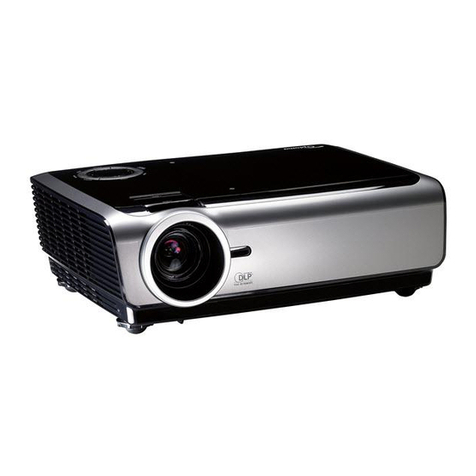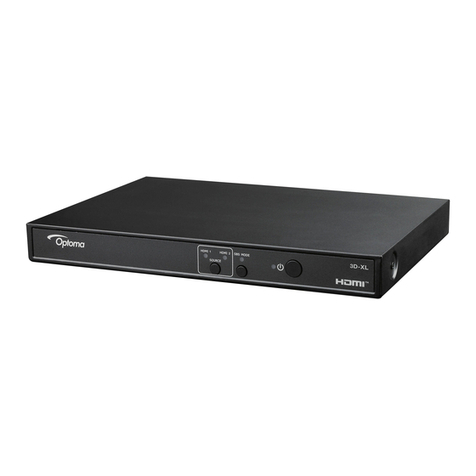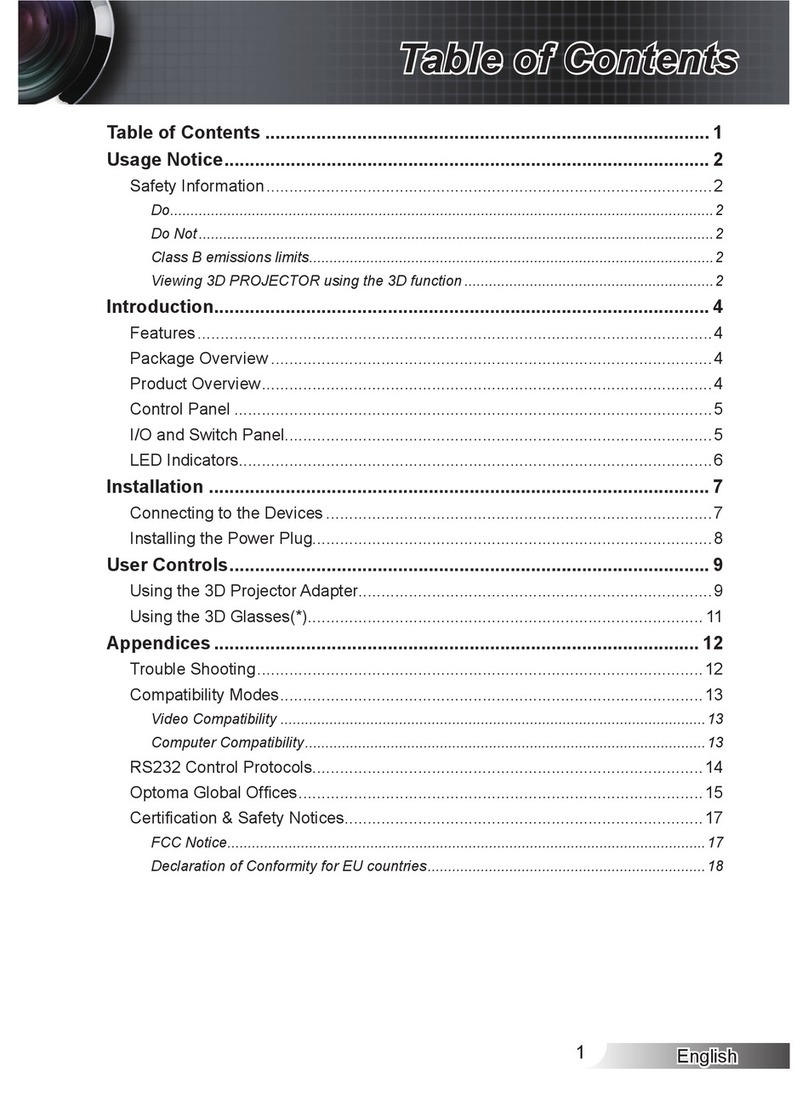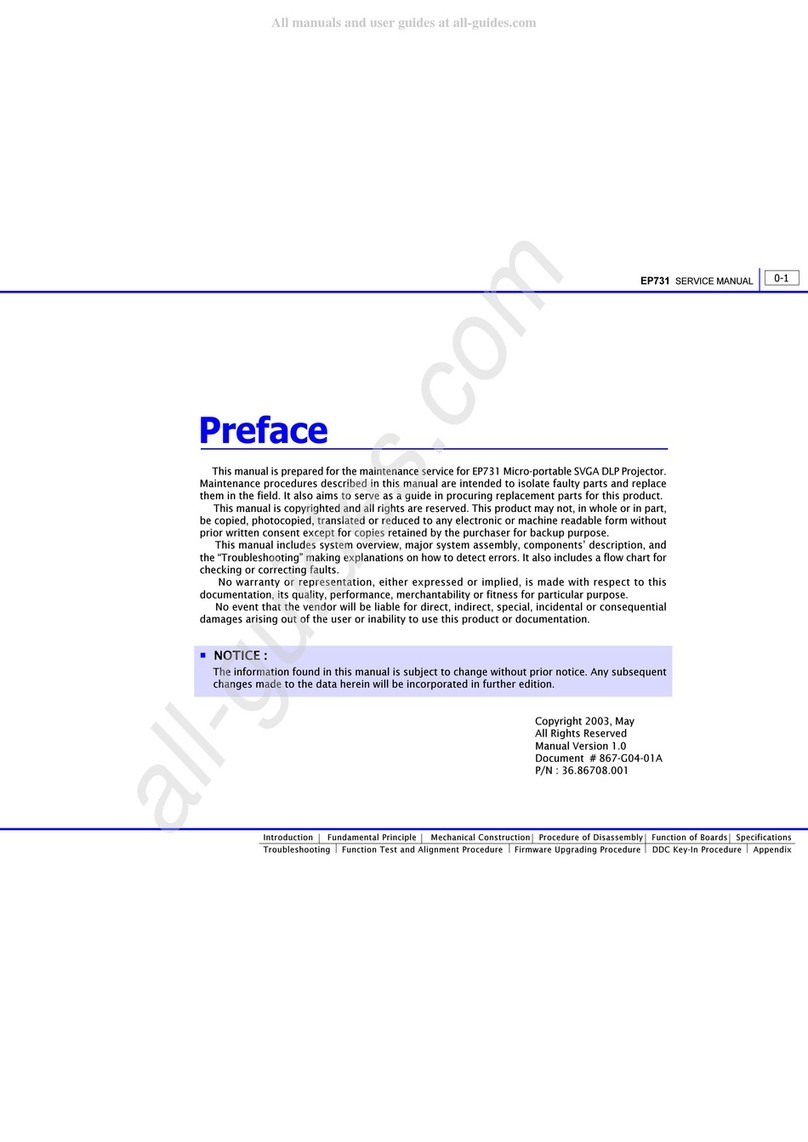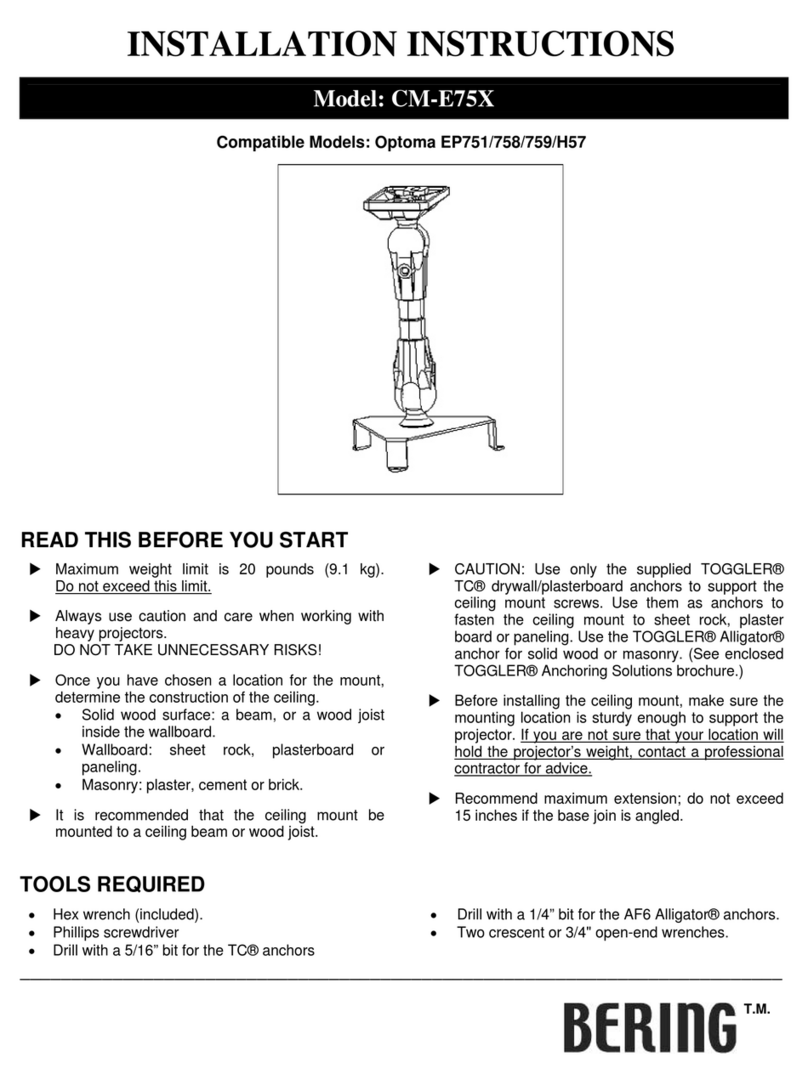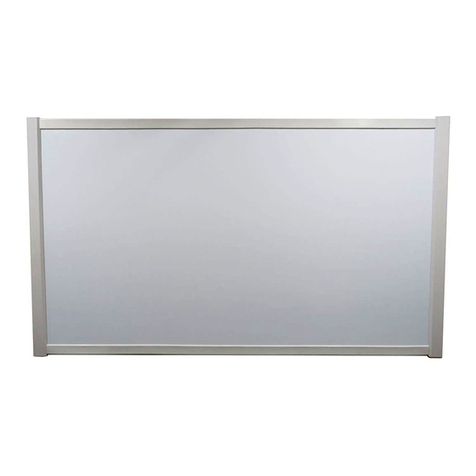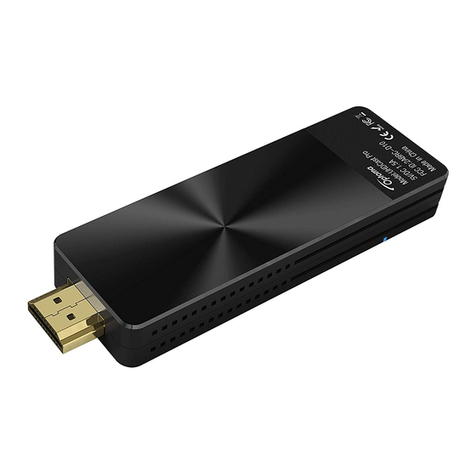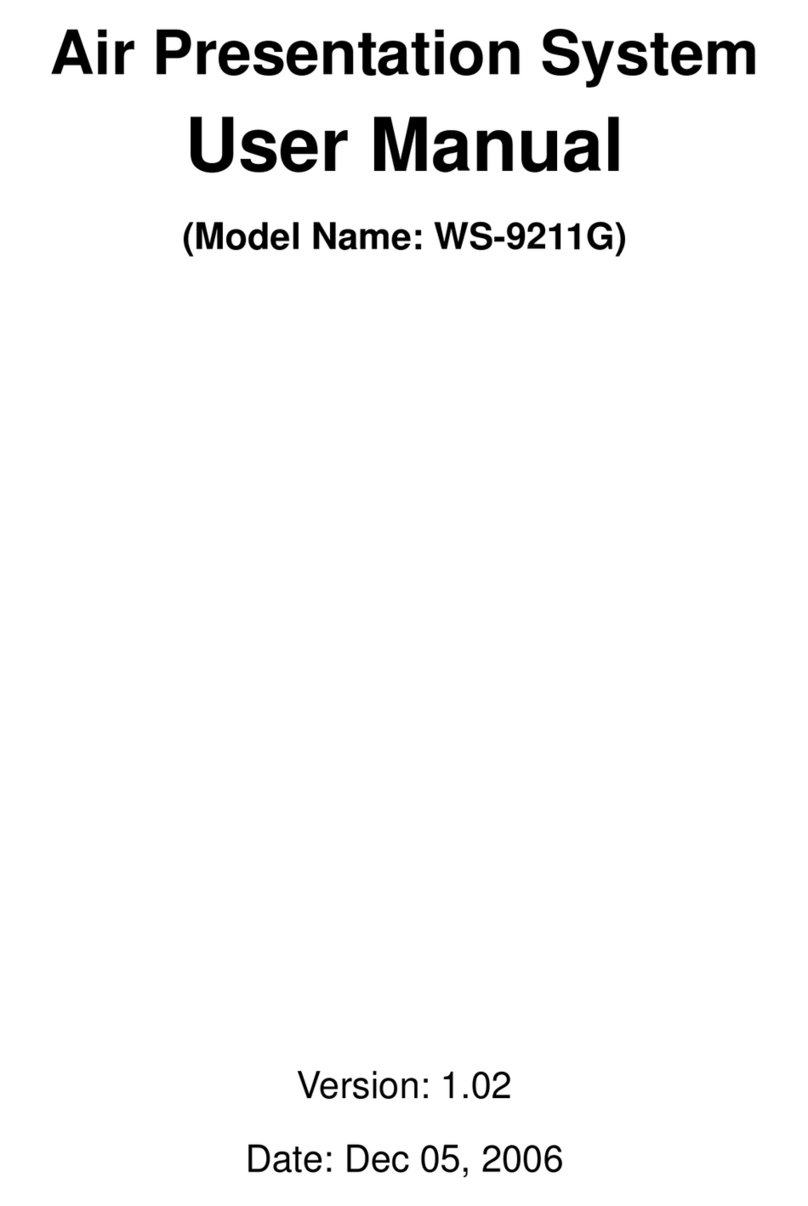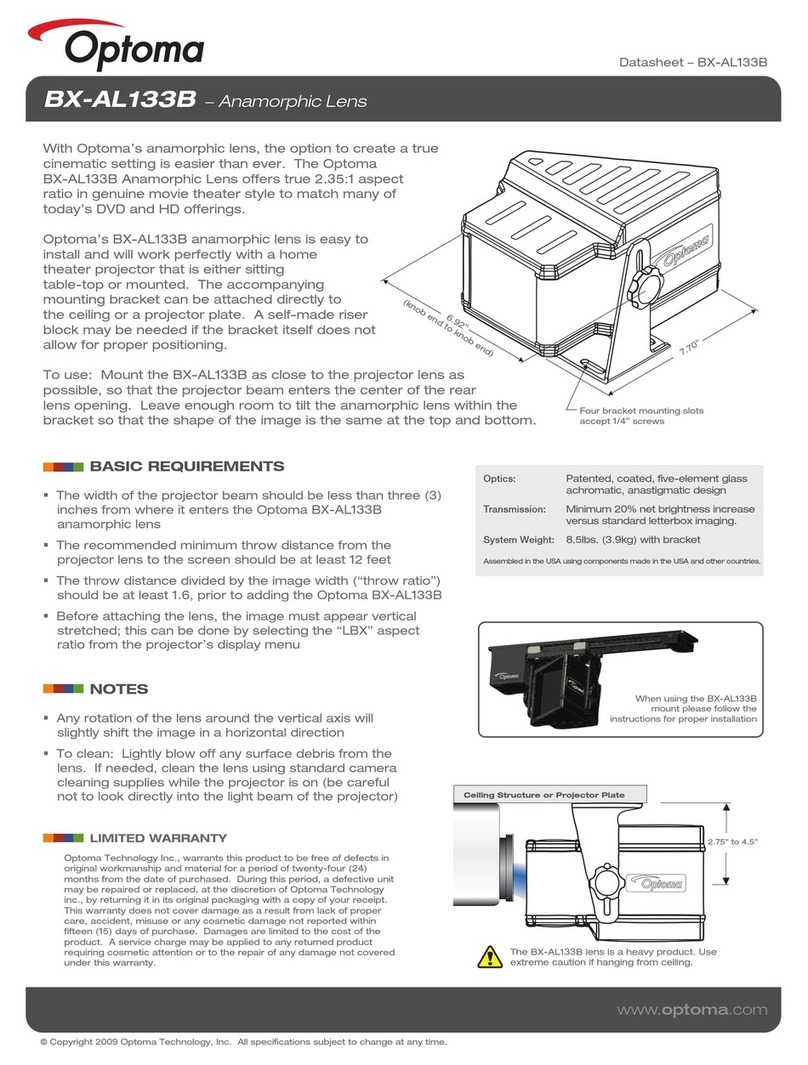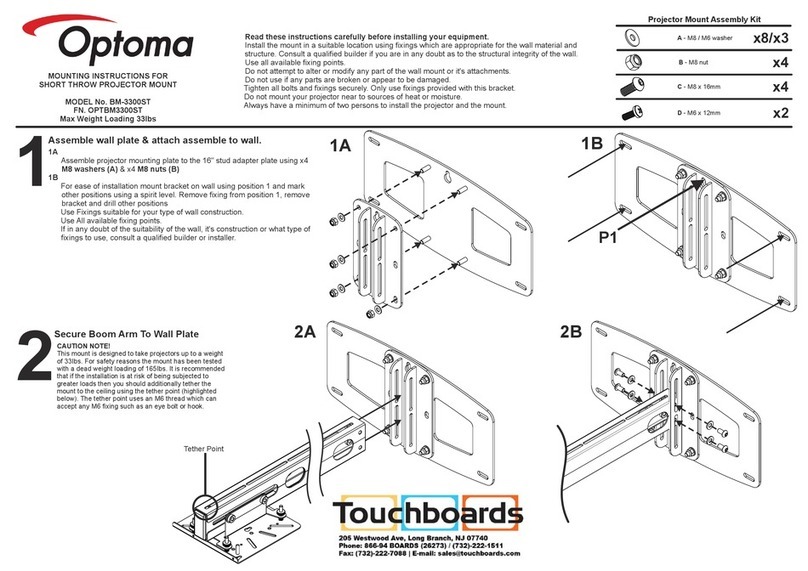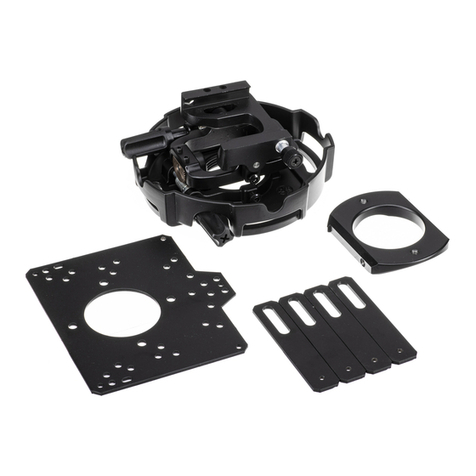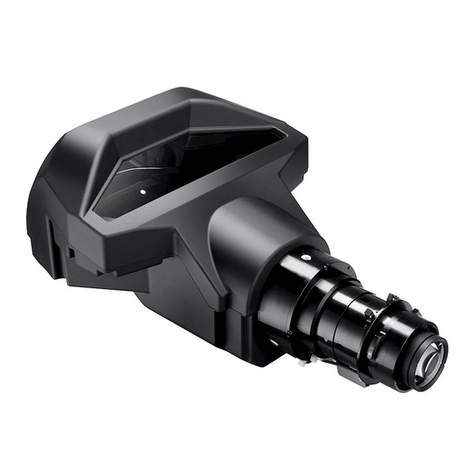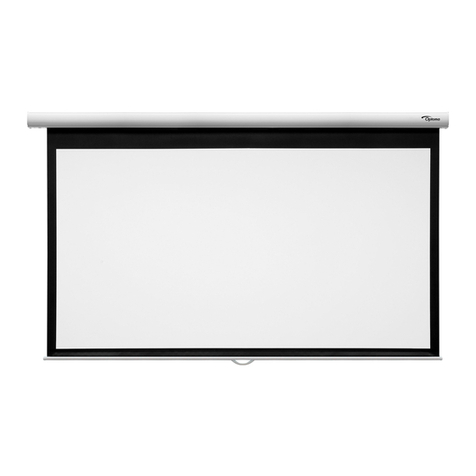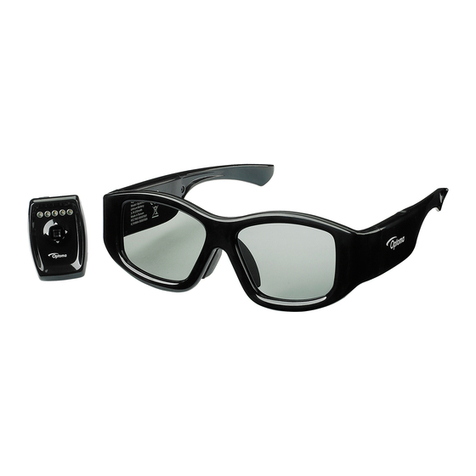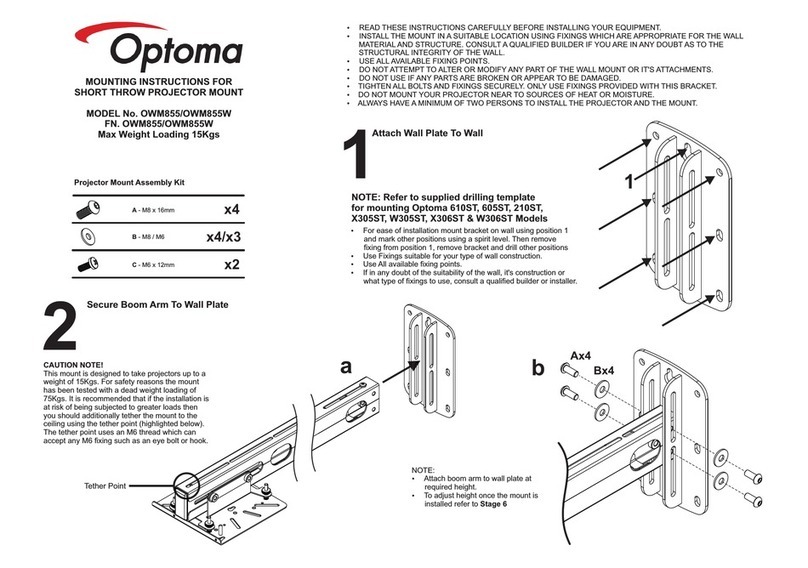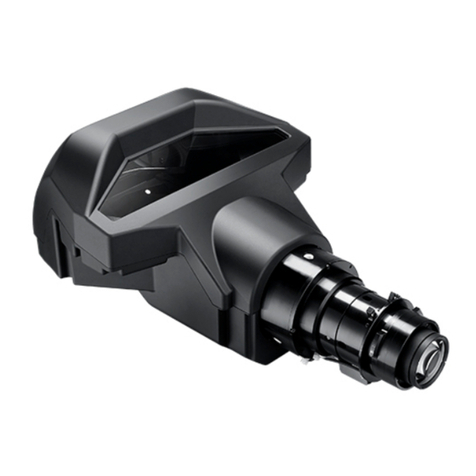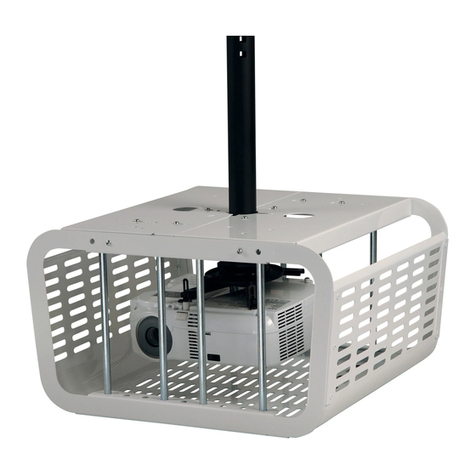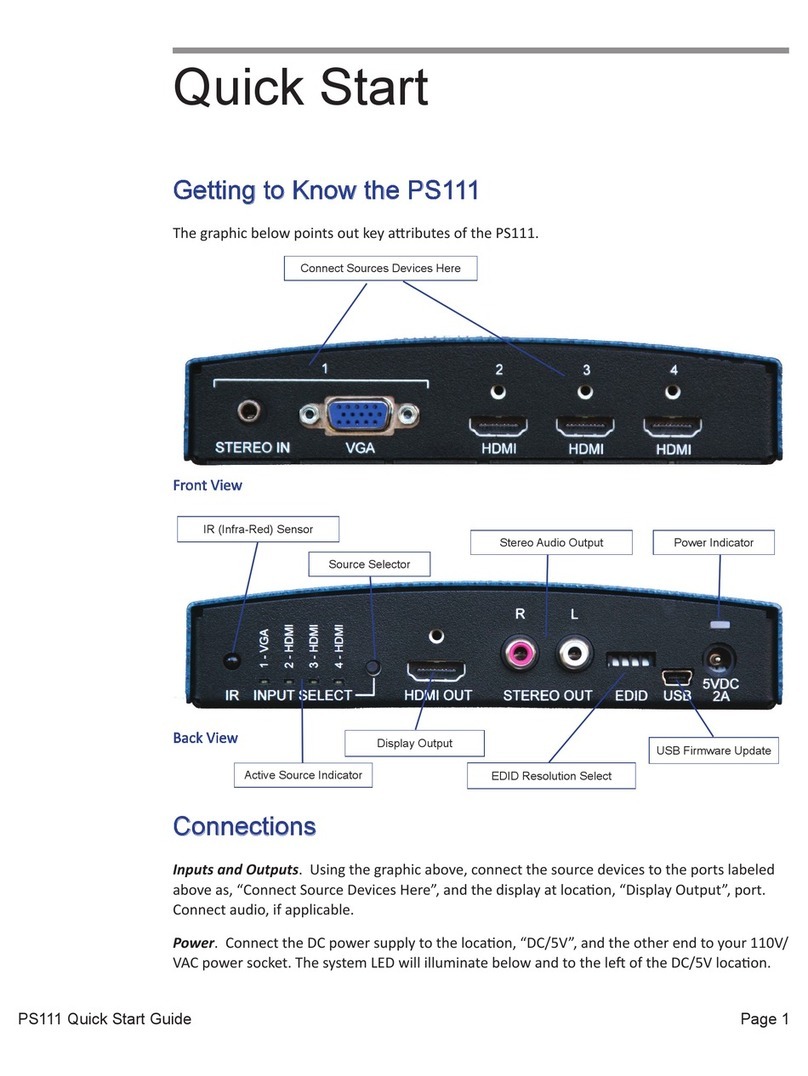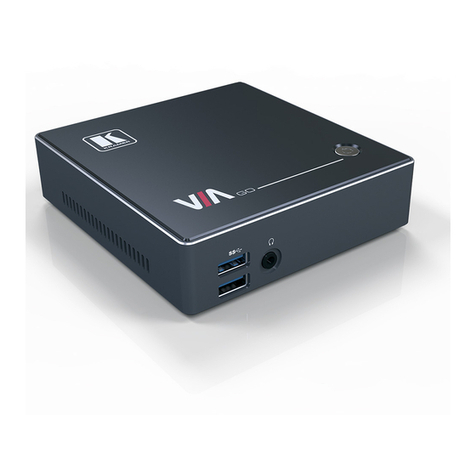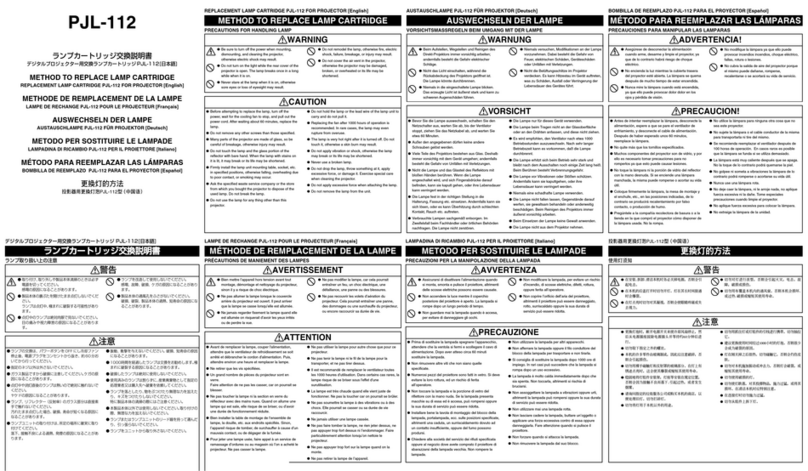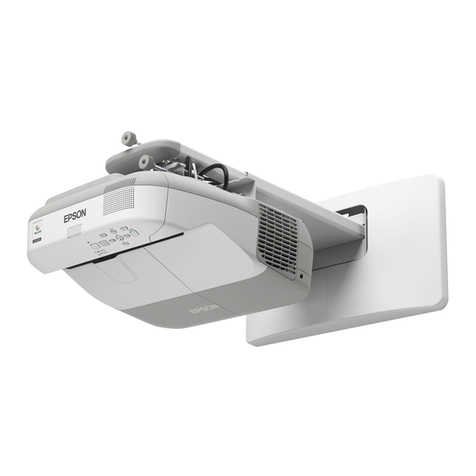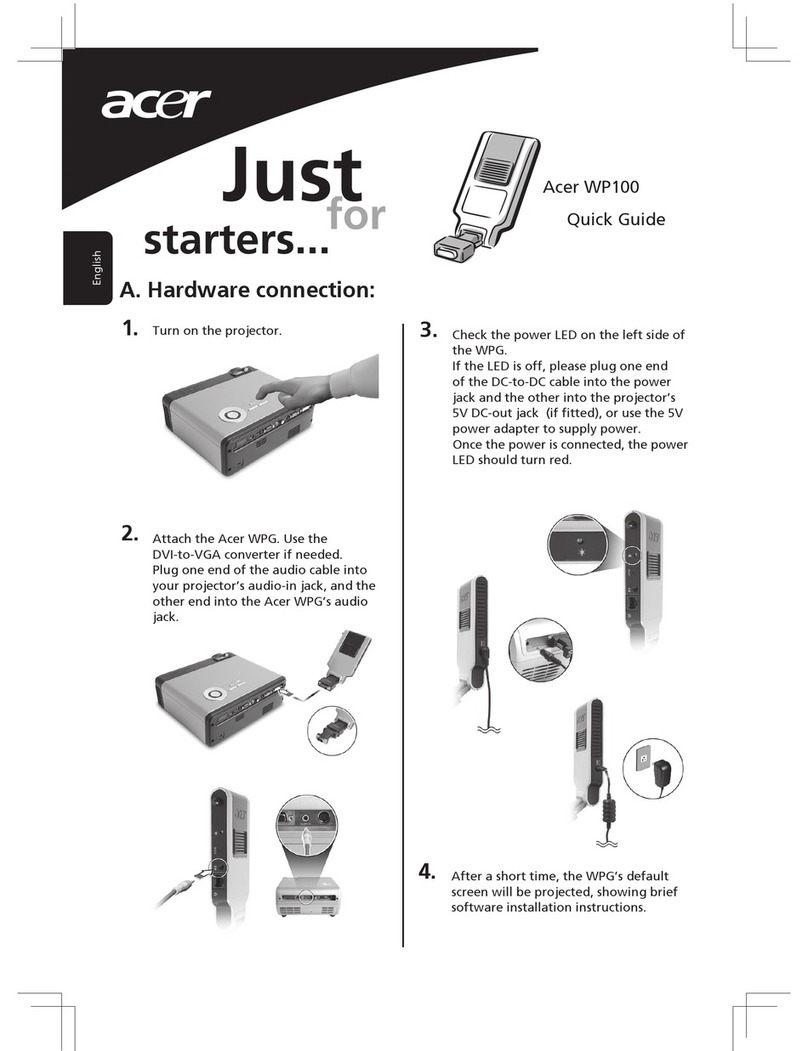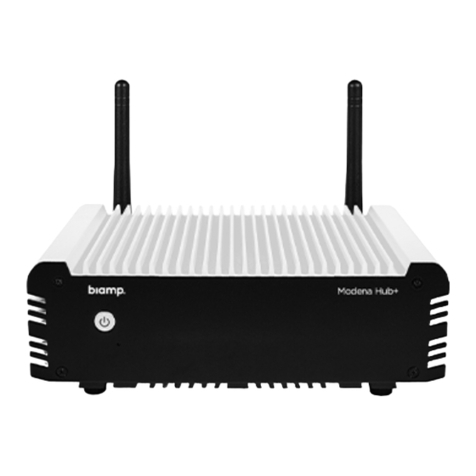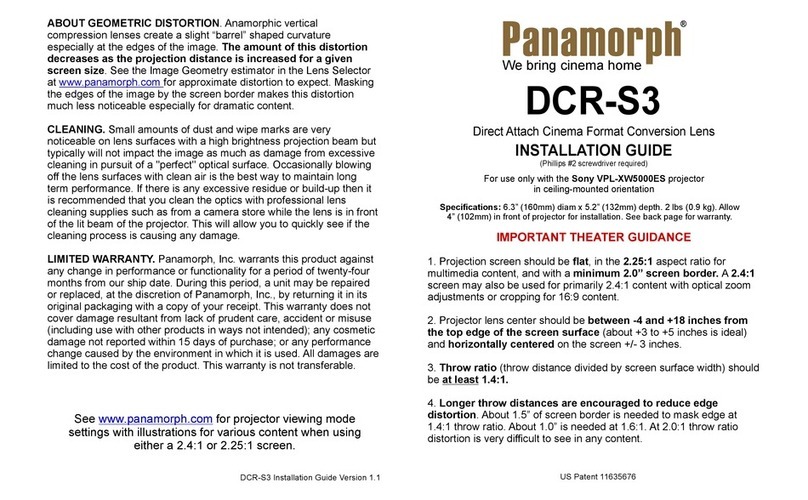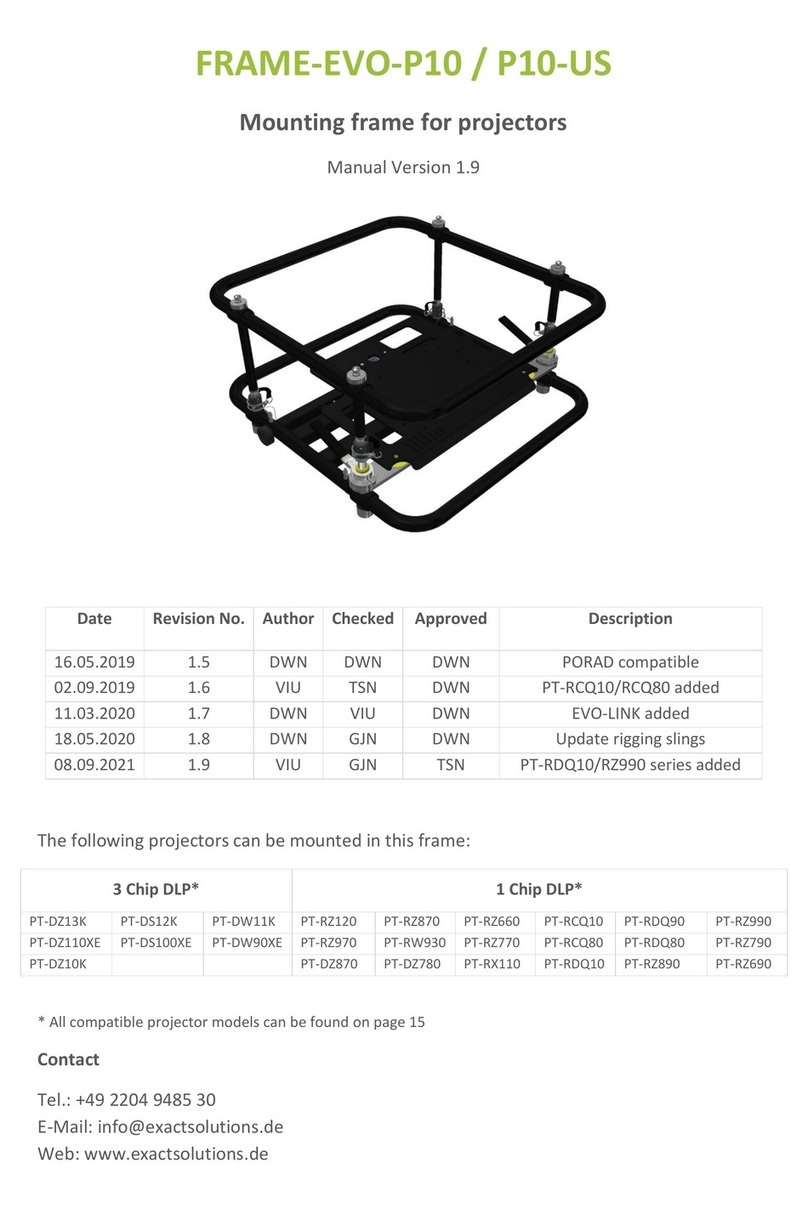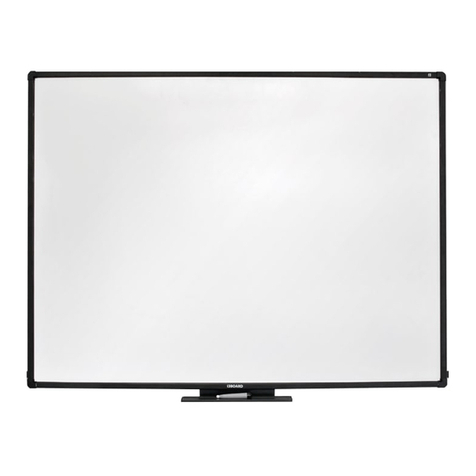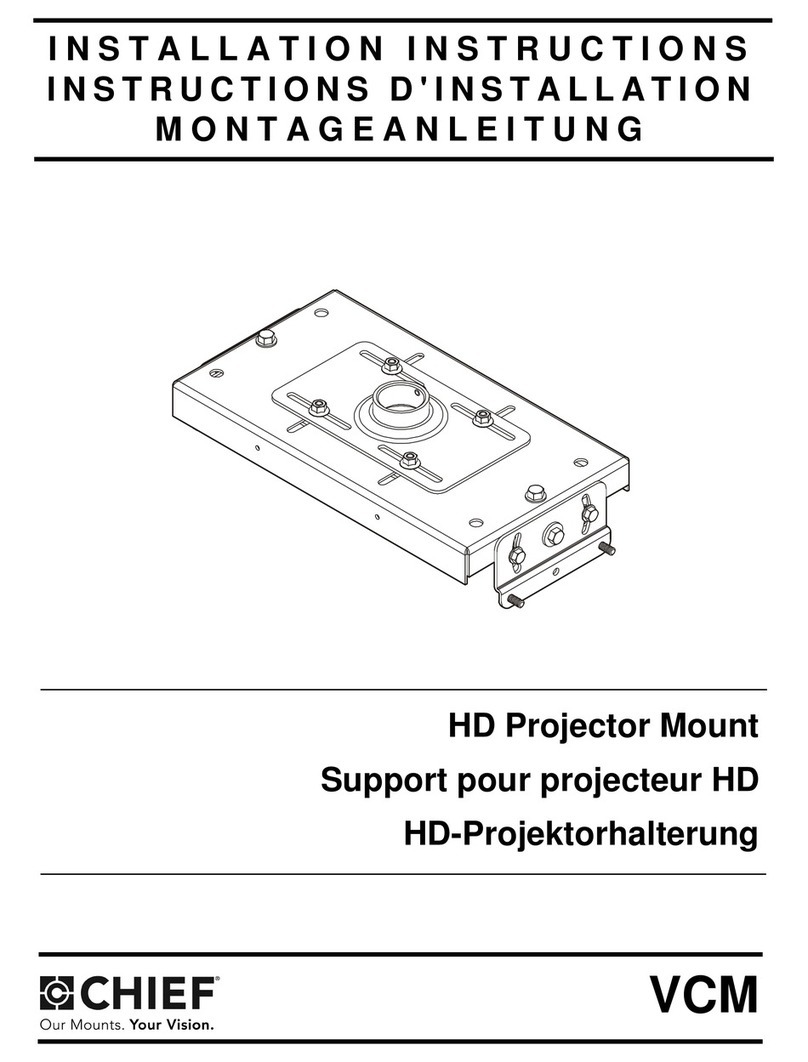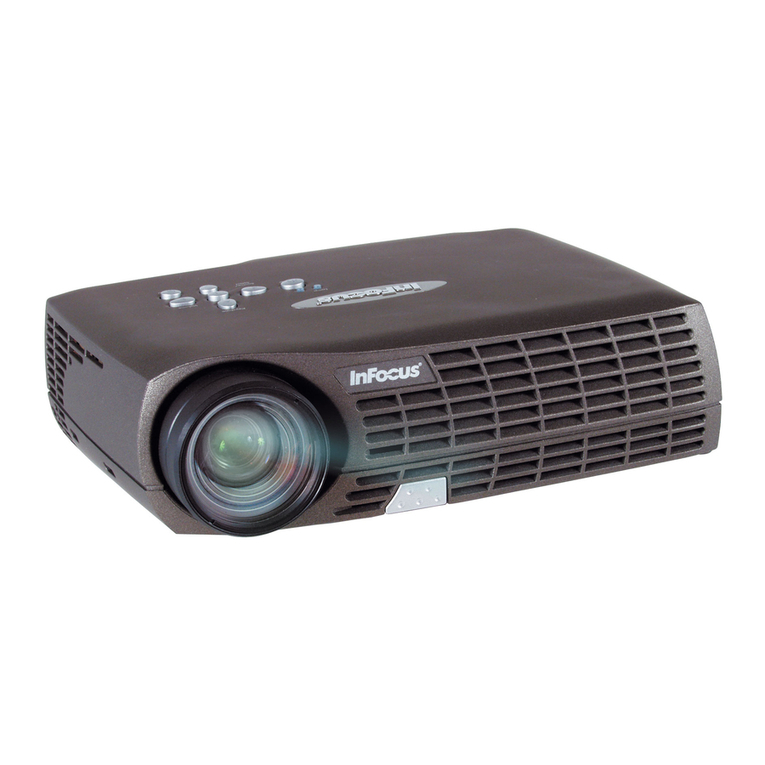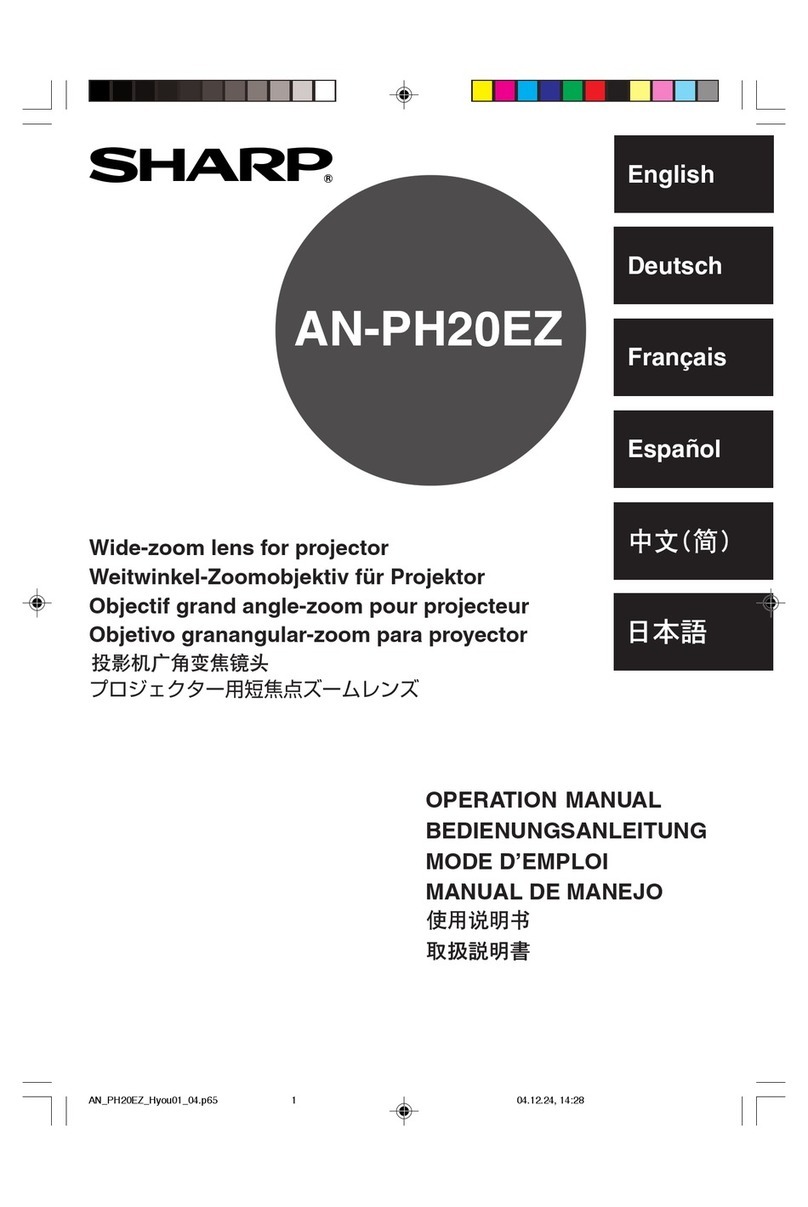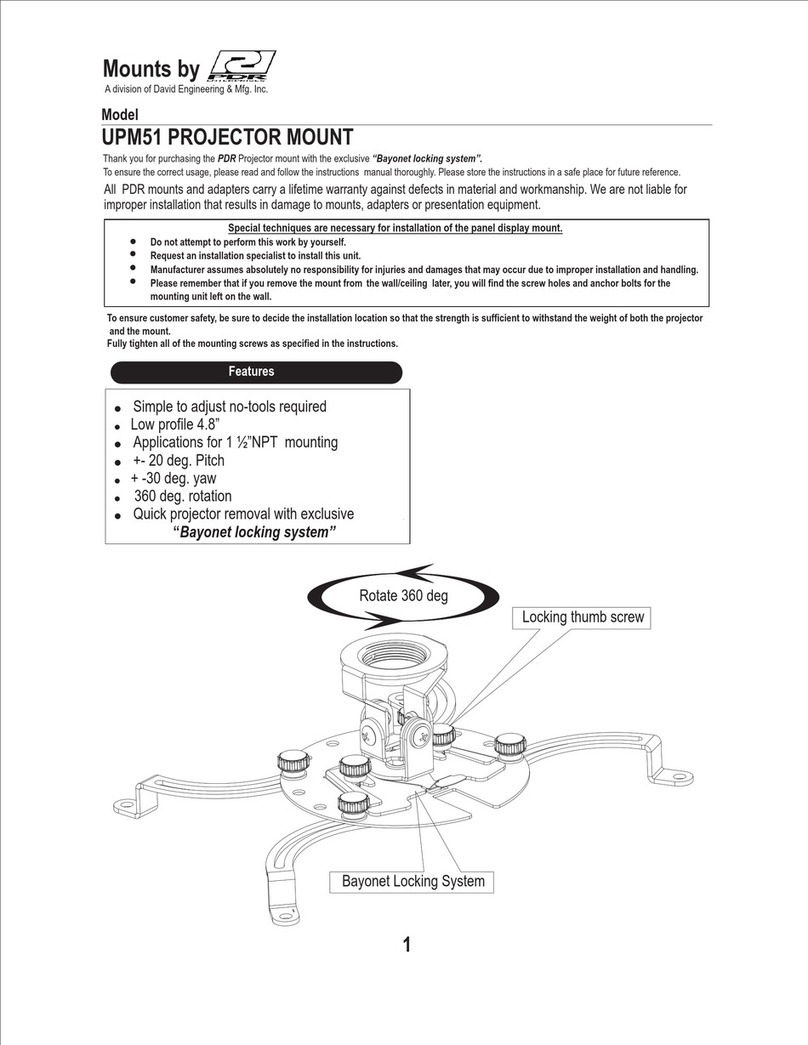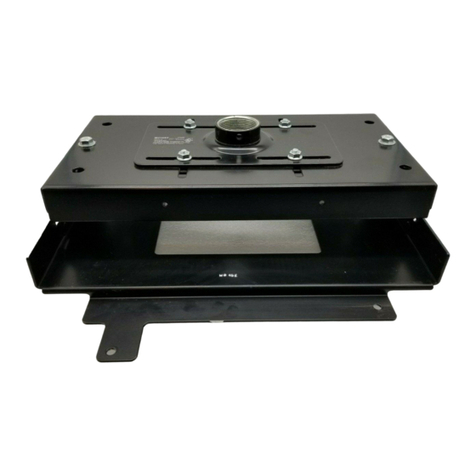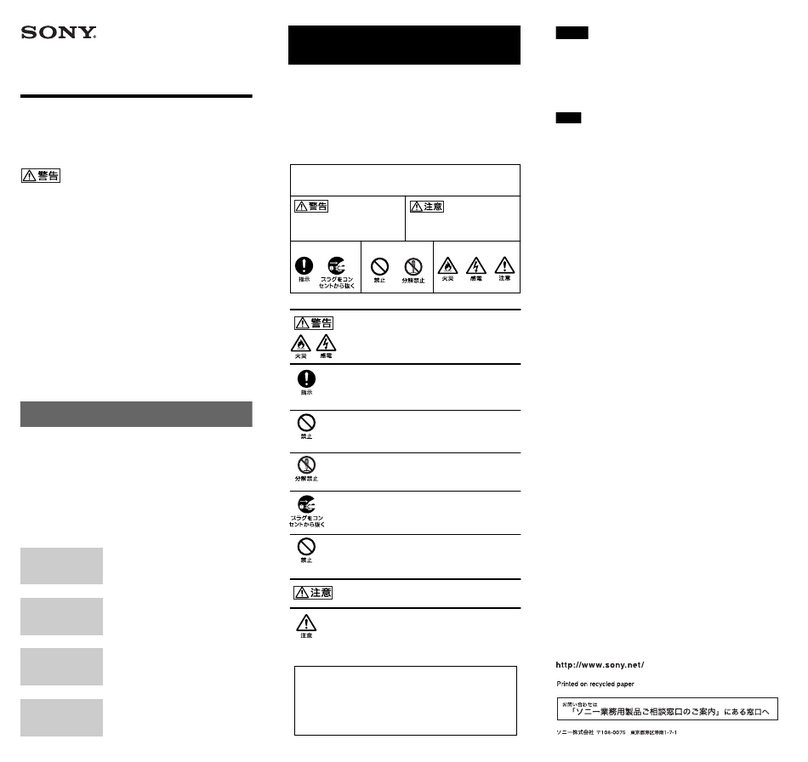
Optoma BX-AL133B User Manual and Installation Guide, Version 1.0, cop right Nov, 2008, all rights reserved, Panamorph Inc.
Page 2
INTRODUCTION
Thank ou for purchasing the Optoma BX-AL133B lens s stem – the world’s leading model
anamorphic lens s stem designed to dramaticall enhance toda ’s high performance 16:9
projectors when showing the true widescreen aspect ratio of most major motion pictures.
The BX-AL133B lens s stem includes the UH480 Lens and ATH1 automated transport to
provide the optimum performance when viewing all wide screen content. The ATH1 transport
can be mounted to our ceiling, to an improvised ceiling structure, or to the pre-engineered
AKPro Attachment Kit. However, due to the ver simple Plug-and-Pla procedure the offer,
use of these kits will be the focus of this installation guide.
UH480 BASIC PROJECTION PARAMETERS
Throw Distan e (distance from projector lens to screen)
This distance should be between 12 and 25 feet (3.6M and 7.6M) with the
standard UH480 lens with an ideal range of 14.5 to 17.5 feet (4.4M to 5.3M) for the
highest pixel level clarit , especiall for computer graphics applications at 1080
resolution. If our projection s stem involves a significantl higher throw distance then
we recommend purchasing an optional correction element (see www.panamorph.com) if
ou need graphic level performance.
Throw Ratio (ratio of throw distance to 16:9 native image width)
This ratio primaril impacts image distortion. To minimize the amount that the
image edges bow inward a throw ratio of at least 1.6 is recommended.
If larger distortion is acceptable, the large aperture of the UH480 will generall
work with a throw ratio as low as 1.3 as long as the beam passes through the lens
unobstructed. Due to the large distortion and also the increased non-uniformit of image
brightness (hot spotting) at ver low throw ratios ou ma wish to consider a curved
screen in such cases to help compensate for these artifacts.
Image/Lens Shift
Horizontal lens/image shift other than fine adjustment is not recommended due to
ke stoning that can be introduced b the UH480. Vertical lens shift does not impact the
use of the UH480. However, note that with vertical lens shift the UH480 should be tilted
to face the approximate center of the screen to make an residual pincushion distortion
s mmetric at the top and bottom of the image.
A NOTE ON YOUR SCREEN FORMAT
The BX-AL133B s stem works ver well with a 2.35:1 aspect ratio screen. However, if ou are
considering a new screen we actuall recommend an aspect ratio of 2.40:1 for the best all
around fit. The 2.35:1 aspect ratio is somewhat of a film industr designation for man aspect
ratios around 2.35:1 and ma include man titles up to 2.40:1 and occasionall higher.
Consequentl , b following these installation instructions we will help ou optimize our constant
height imaging performance for all three primar aspect ratios of 16:9, 1.85:1 and the general
range of 2.35:1-2.40:1.
